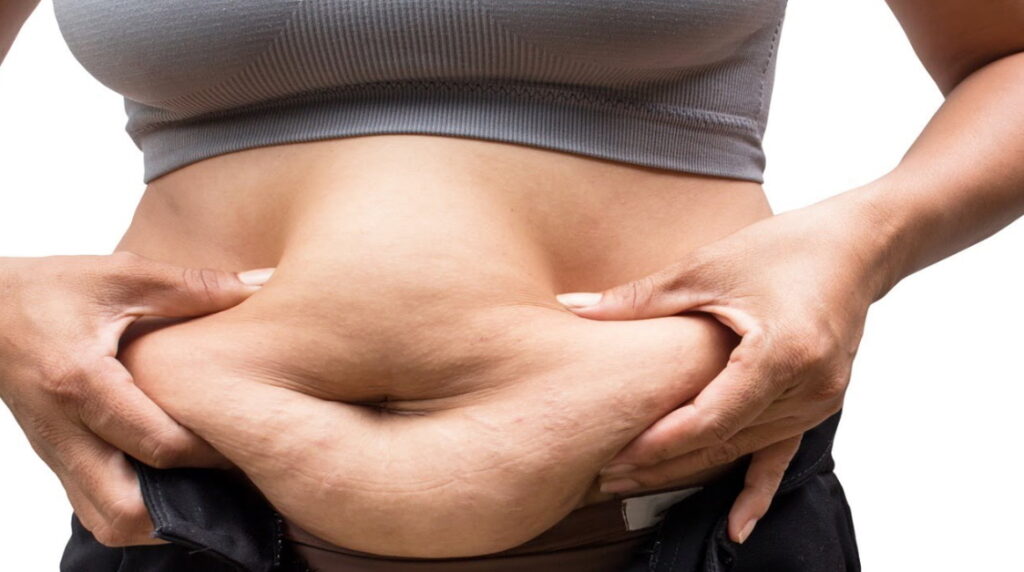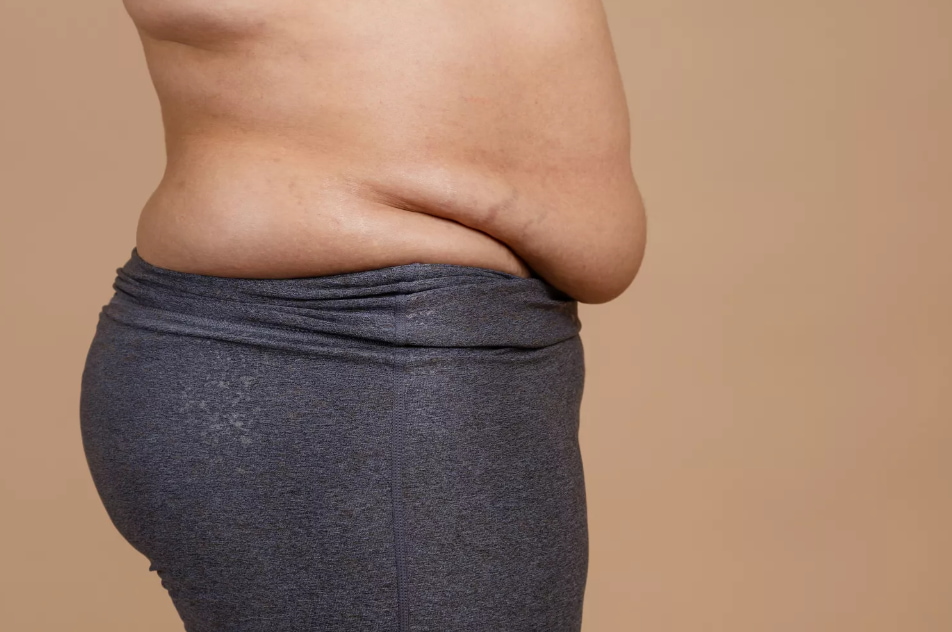Apron belly, or pannus stomach, is a condition of hanging fatty tissue and skin from the abdomen. It can be caused by pregnancy, excessive weight gain, or sudden weight loss. It’s medically known as an abdominal pannus. In most instances, the hanging skin can be painful, such as causing irritation or skin infections.
Table of Contents
What Causes an Apron Belly?
The development of an apron belly is usually attributed to one of the following reasons:
Pregnancy
Following childbirth, the skin that was previously stretched to hold a developing baby may not have retracted fully, causing a sagging appearance referred to as “mother’s apron.”
Obesity
When there is excess weight in the area surrounding the belly, it may cause an apron belly. This can lead to severe health threats such as heart disease, diabetes, and high blood pressure.
Marked Weight Reduction
Patients who lose weight aggressively, e.g., after bariatric surgery, tend to develop excessive sagging of the skin that is seen over the stomach. The skin sag in some individuals both pre-operatively and post-operatively depending on the magnitude of weight reduction.
You Might Also Like:
- Proven Ways to Lower Blood Sugar Naturally
- Bone Broth Benefits and Nutrition
- Natural Remedies for Digestive Health
Apron Belly vs. FUPA: A Distinction That Can Be Understood
Although both conditions include fat around the belly, a FUPA (Fat Upper Pubic Area) is actually the fat above the pubic area, while an apron belly goes lower, hanging over the pubic area. Apron belly, unlike FUPA, may be caused by both fat gain and sudden weight loss.
How Does a Pannus Stomach Look?
A pannus is literally a fold of skin that hangs from the belly, looking like an apron. The size of a pannus stomach can be anything; it can cover just the lower abdomen or hang down to the knees in severe cases. The skin fold formed by this hanging tissue can cause moisture to accumulate, which can result in bacterial infections, such as intertrigo—a rash caused by skin friction.

Treating and Managing an Apron Belly
Though it’s not possible to specifically target fat loss in one area of the body, you can take some measures to reduce the appearance and discomfort of an apron belly:
Core Exercises
Though tightening the abdominal muscles may not shrink the pannus directly, it can increase muscle tone and help support the region.
Non-Surgical Options
Techniques such as CoolSculpting, which involves freezing fat cells, are sold for body contouring but do not work effectively for removing excess skin.
Laser and Radiofrequency Skin Tightening
These procedures are effective on small areas such as the face and the chin, but are not very useful when dealing with extensive areas of loose skin like the apron belly.
Surgical Alternative: Panniculectomy
For those who are severely impacted by a pannus stomach, panniculectomy is a surgical solution. It eliminates excess tissue and skin from the belly and can enhance mobility and comfort. It’s especially helpful if the pannus leads to recurring skin infections or makes daily activities hard to do.
The operation will usually take 4 weeks to recover from and may result in scarring, although most patients report enhanced self-confidence after the operation.
Related Articles:
Living with Apron Belly: Comfort Tips
If a physical discomfort is being caused by an apron belly, then follow these practical tips for managing it:
Hygiene
Clean and dry the area regularly to avoid infection. Use tummy liners (absorbent materials such as gauze) under the pannus to minimize friction.
Shapewear and High-Rise Underwear
These garments can help support the area and improve comfort, as well as boost confidence in your appearance.
Antifungal Creams
Consult your healthcare provider about using creams to prevent fungal infections in skinfolds.
Conclusion
Apron belly is a popular condition that arises due to pregnancy, obesity, or weight reduction. It could lower your confidence and lead to health problems such as skin inflammation and infections. Diet and exercise can be of help in weight loss in general, but won’t particularly attack an apron belly. Some improvement can be achieved with non-invasive therapies, but the best way out for those suffering from extreme conditions is surgery.
